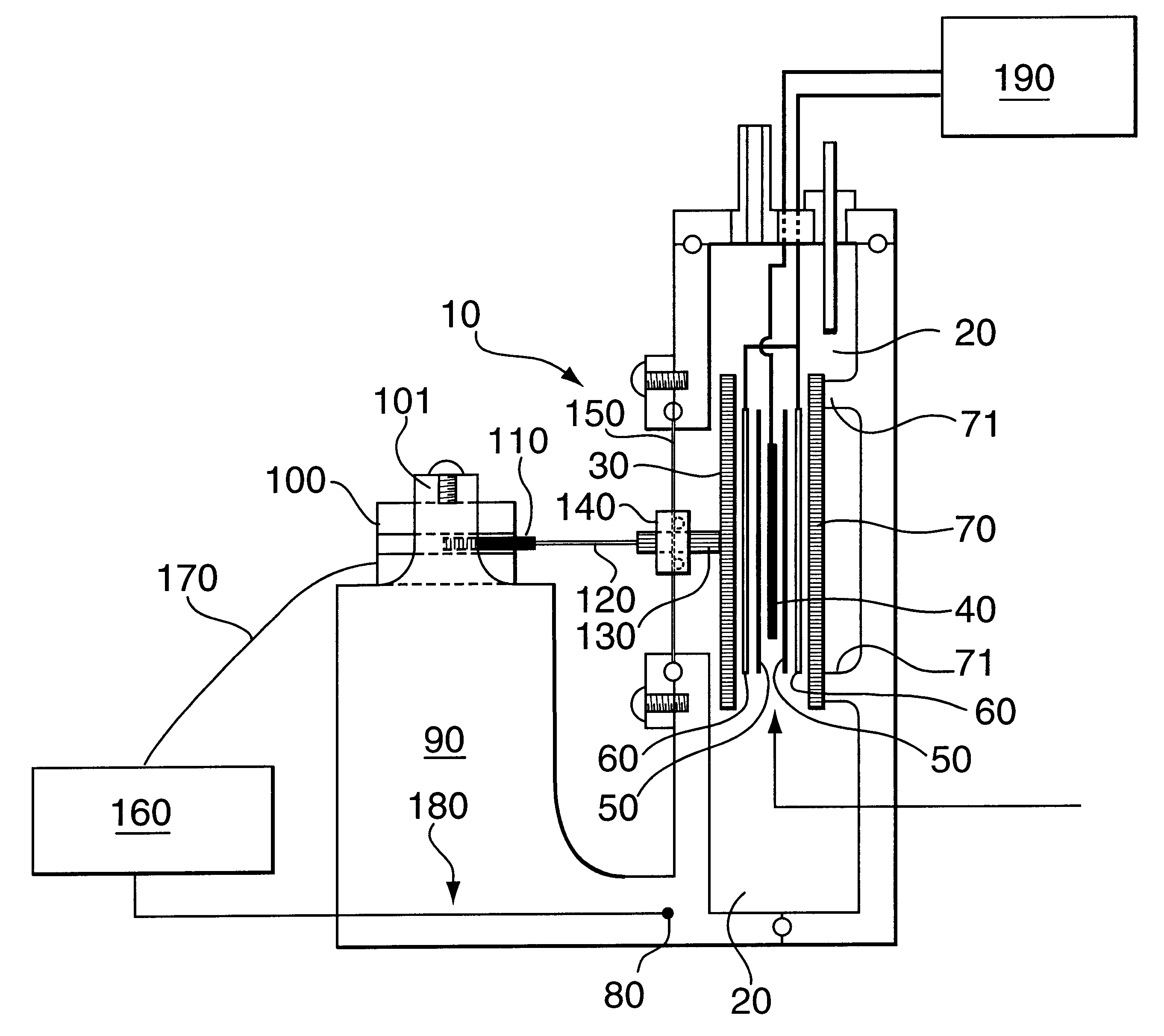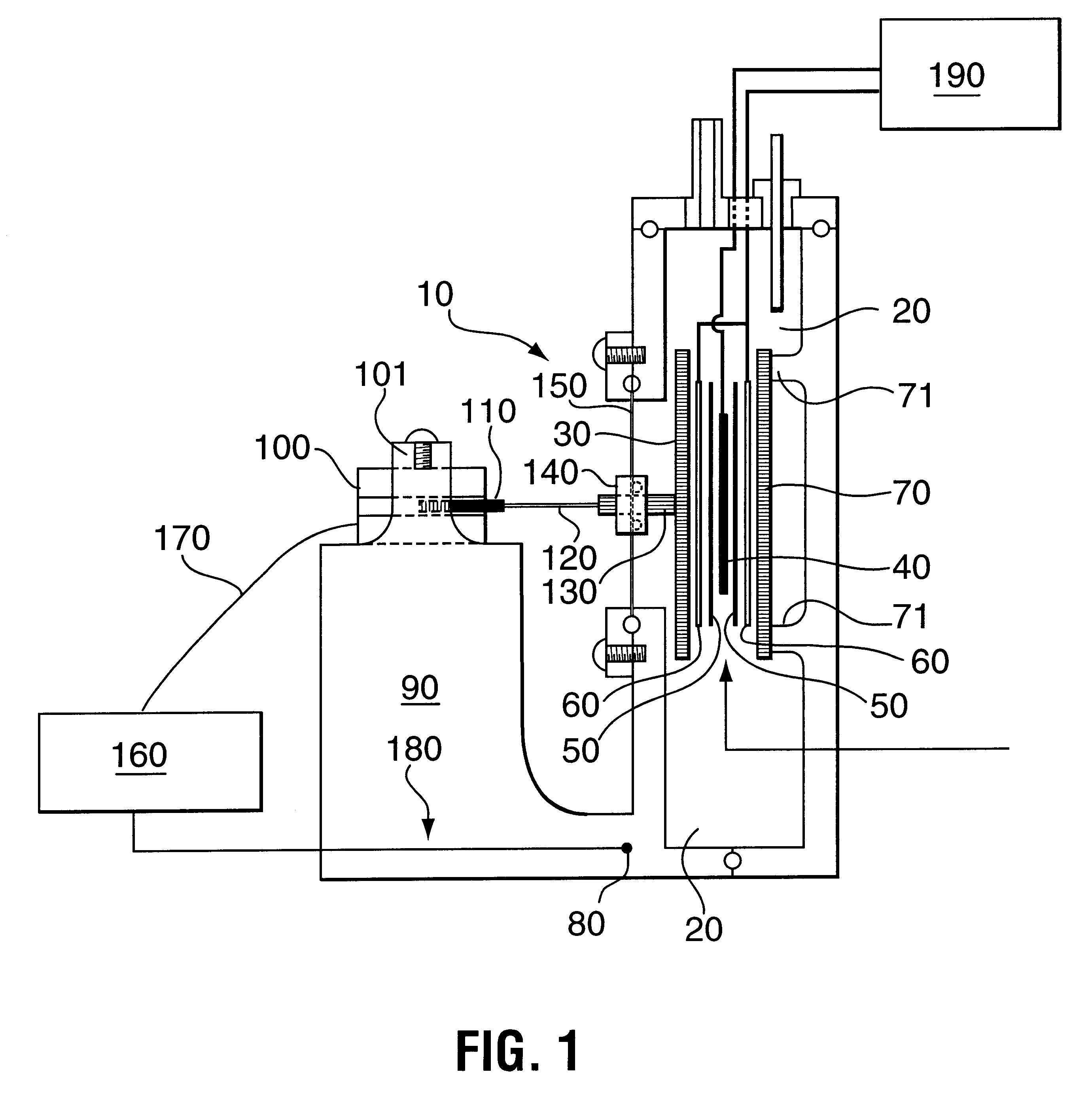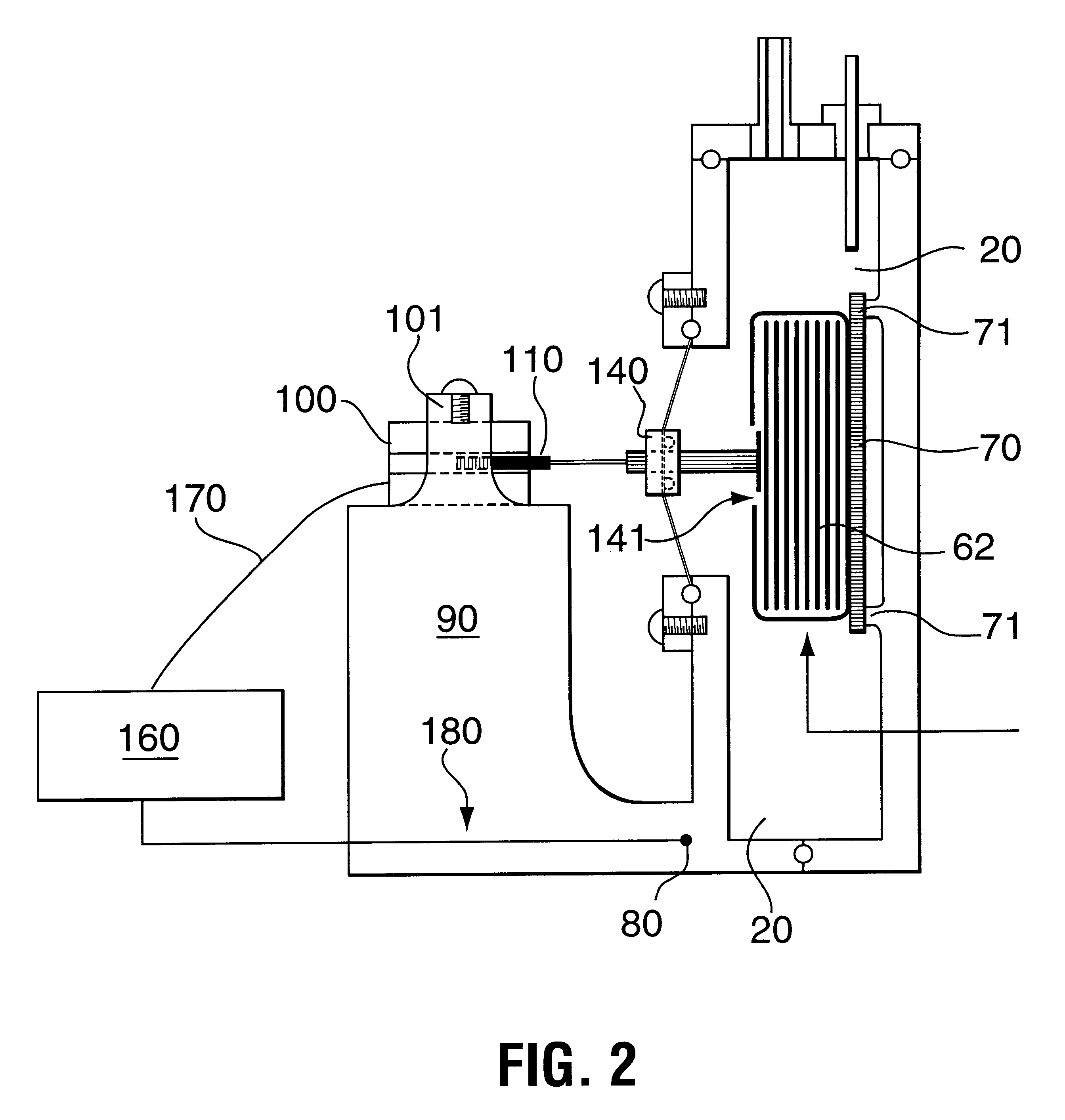Rechargeable battery electrode testing device
a battery electrode and testing device technology, applied in the direction of secondary cell servicing/maintenance, primary cell maintenance/service, instruments, etc., can solve the problems of irreversible mechanical degeneration of the electrode material, irreversible mechanical strain, and neither of them provide a means to test and record
- Summary
- Abstract
- Description
- Claims
- Application Information
AI Technical Summary
Benefits of technology
Problems solved by technology
Method used
Image
Examples
example 2
The second experiment is a simplified optimization experiment. For any optimization experiment a testing device array should be used. This makes it possible to investigate the effects of simultaneously varying two or more parameters. For the sake of simplicity, only the results from a two electrode testing device array with only one parameter varied is presented here.
FIG. 7 compares the swelling behavior of two types of electrodes. The type "A" electrode was made with a nickel hydroxide powder of lower crystallinity while type "B" was made with a nickel hydroxide of higher crystallinity; additionally the powder used in constructing the type "B" electrode has thinner crystals with larger diameter when compared with the lower crystallinity powder used to make the type "A" electrode. The electrodes were prepared and tested in the same manner as the electrode of Example 1.
The electrode made with the type "A" powder had a total mass of 1.906 g. From that mass, 1.519 g was due to the acti...
PUM
 Login to View More
Login to View More Abstract
Description
Claims
Application Information
 Login to View More
Login to View More - R&D
- Intellectual Property
- Life Sciences
- Materials
- Tech Scout
- Unparalleled Data Quality
- Higher Quality Content
- 60% Fewer Hallucinations
Browse by: Latest US Patents, China's latest patents, Technical Efficacy Thesaurus, Application Domain, Technology Topic, Popular Technical Reports.
© 2025 PatSnap. All rights reserved.Legal|Privacy policy|Modern Slavery Act Transparency Statement|Sitemap|About US| Contact US: help@patsnap.com



